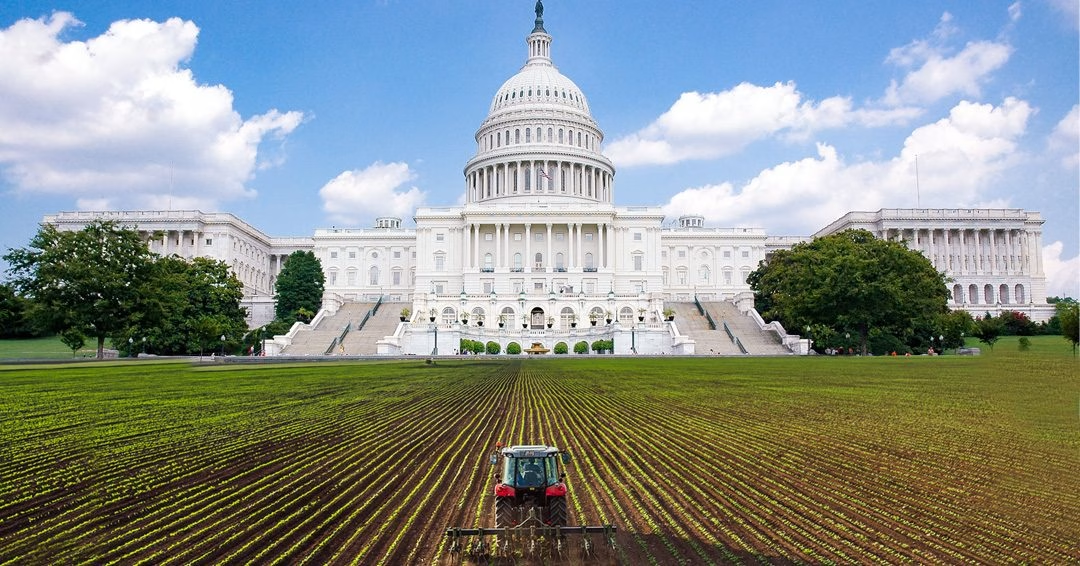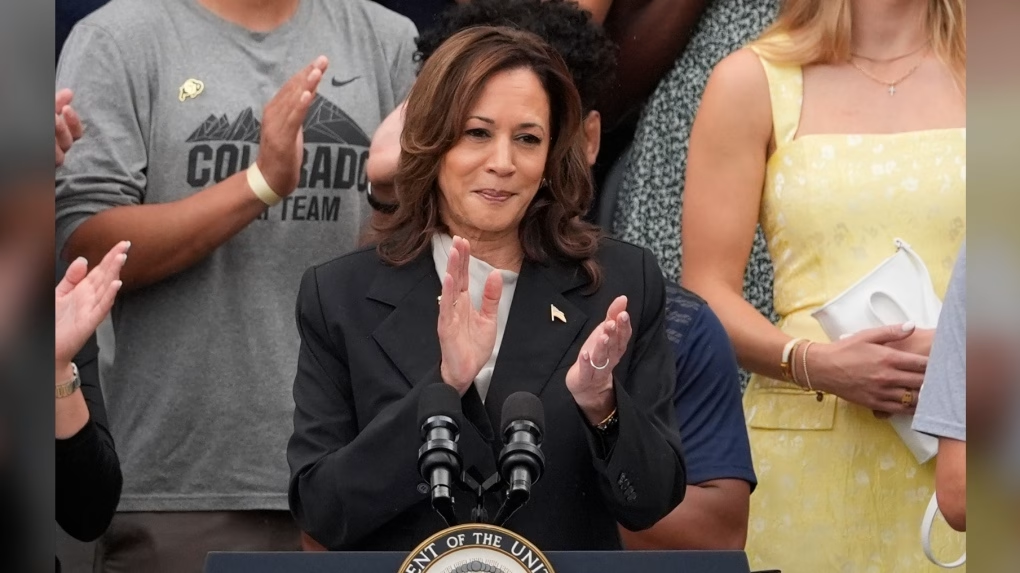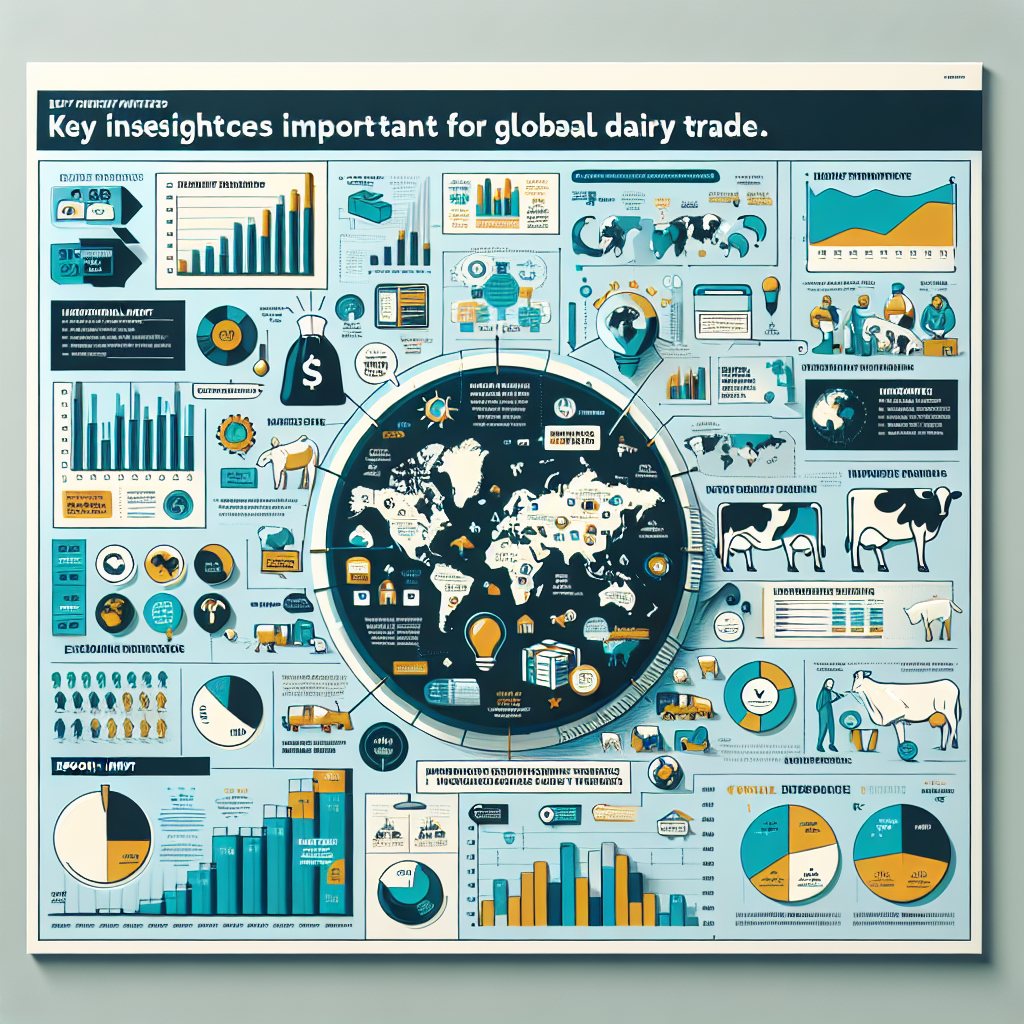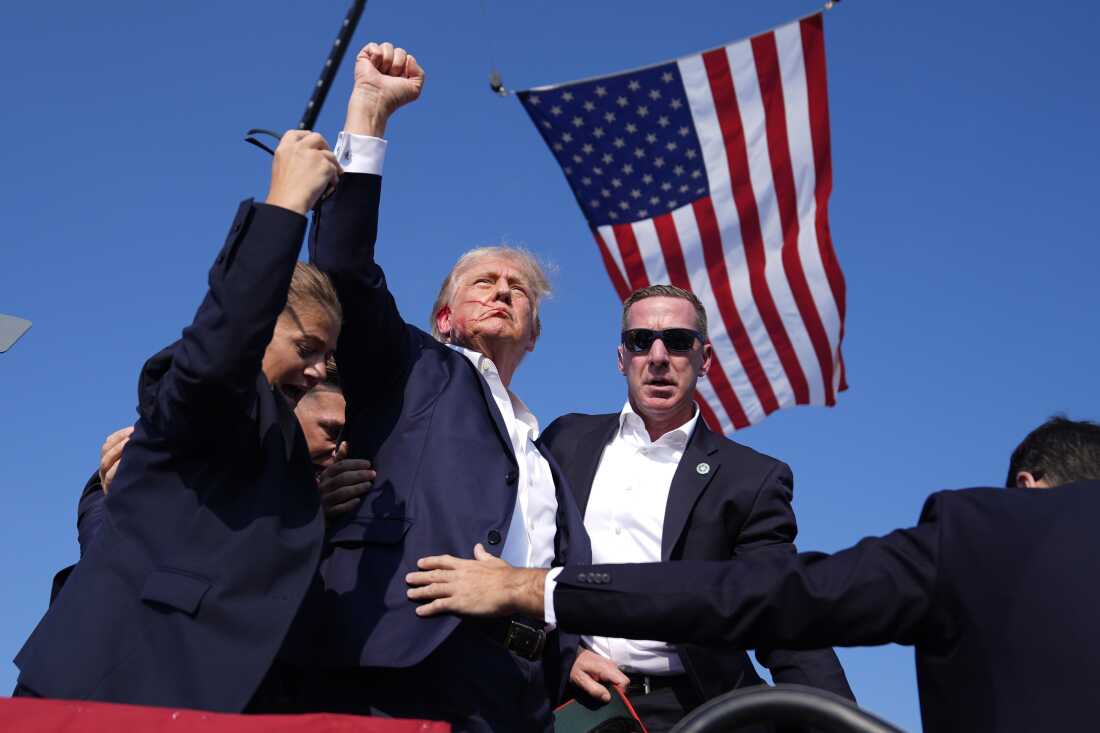Explore how Trump and Harris’s agricultural policies could shape the future of dairy farming. Which candidate best supports your farm’s success? Read our expert analysis now.
Summary:
With the U.S. presidential election looming, understanding the agricultural platforms of leading candidates is crucial for farmers and agricultural professionals. This article delves into the farm policies of former President Donald Trump and Vice President Kamala Harris across trade, regulatory reforms, tax policies, and sustainability. By examining their positions on the Farm Bill, labor, and environmental policies, dairy farmers and industry stakeholders can better gauge which candidate aligns with their needs and priorities. As Ambassador Kip Tom and Rod Snyder outline the agricultural visions of their respective candidates, readers will find detailed insights and practical implications for the future of American farming. This comparative analysis is designed to inform and equip industry professionals with the knowledge needed to make an educated vote, exploring distinct approaches that will shape the landscape of American agriculture over the next four years.
Key Takeaways:
- Former President Donald Trump prioritizes reducing regulatory burdens, enhancing trade deals, and supporting market expansion to bolster the agricultural economy.
- Trump’s platform emphasizes the importance of innovation and modern agricultural techniques to ensure productivity and global competitiveness.
- Vice President Kamala Harris advocates for sustainable agriculture, environmental stewardship, and strengthening rural communities through investments in infrastructure and clean energy.
- The Harris-Walz administration aims to balance support for market access with labor reforms and climate-smart agricultural practices.
- Both Trump and Harris recognize the critical role of the Farm Bill and crop insurance in providing stability and risk management for farmers.
- Immigration and labor policies remain a contentious issue, with differing approaches on how to secure a reliable agricultural workforce.
- Trade policies are a major point of divergence, with Trump focusing on tariffs and renegotiating deals, while Harris emphasizes diplomatic solutions and market diversification.
- Environmental and climate policies present stark contrasts, with Trump favoring deregulation and Harris pushing for enhanced sustainability measures.
- The forum highlighted the essential need for strong agricultural policies to support the industry’s growth and address challenges faced by American farmers.

Have you ever considered how agricultural policy affects your dairy farm’s milk pricing or feed availability? With the crucial upcoming presidential election, dairy producers understand that the stakes are more significant than ever. The policies of people running for the nation’s highest office significantly impact the future of American agriculture. Former President Donald Trump and Vice President Kamala Harris have two contrasting views on agriculture, and the discrepancies might significantly impact dairy producers. This essay will present a detailed assessment of these two candidates’ agricultural agendas, emphasizing what dairy producers should know. We’ll examine each candidate’s approach, from trade policies to environmental laws, to see how they may affect your everyday operations and long-term plans.
Behind the Headlines: Why Agricultural Policies Matter More Than Ever This Election
Agricultural policies may not often make headlines in presidential elections, but they are critical for farmers and other agricultural stakeholders. They directly influence the agricultural community’s economic stability, market access, and environmental practices. Every four years, presidential candidates outline their agricultural agendas, outlining how they want to help this critical industry that feeds the country and fuels rural economies.
The September Farm Foundation® Forum is an integral part of this conversation. Held at the National Press Club, it offers an opportunity for a thorough assessment of presidential contenders’ agriculture policies. This nonpartisan event aims to educate voters, particularly those in the agriculture sector, on the possible effects of these policies.
Ambassador Kip Tom represented former President Donald Trump at this year’s Forum, while Rod Snyder represented Vice President Kamala Harris. Ambassador Tom, an eighth-generation Indiana farmer and former US Ambassador to the United Nations Agencies for Food and Agriculture, has extensive practical farming knowledge and a global perspective on agricultural challenges. Rod Snyder, a former senior counselor for agriculture at the EPA and an experienced agricultural policy specialist, discusses the Democratic platform, emphasizing sustainability and rural investments. Their opposing viewpoints provide a thorough picture of what either administration may signify for the future of American agriculture.
Trump’s Roadmap for a Robust Agricultural Future
Ambassador Kip Tom, representing former President Donald Trump, presented a comprehensive vision for Trump’s agricultural agenda, emphasizing the importance of strengthening rural America through strategic trade policies, regulatory reforms, tax policies, and unwavering support for agricultural innovation.
Trade Policies
Trade played a significant role in Trump’s strategy to boost the agricultural economy. Ambassador Tom emphasized Trump’s unwavering determination to secure advantageous trade agreements. He cited vital trade agreements signed during Trump’s prior administration, including those with China, Mexico, Canada, and Japan. These agreements, While beneficial for the overall agricultural economy, might have specific implications for dairy producers. For instance, the trade war with China led to an increase in trade of $26 to $38 billion after the phase-one accord, which could have positively impacted dairy exports. “Trump wants to do what’s best for Americans,” Tom said, meaning that Trump’s trade policies aim to establish stable foundations for American farmers in global markets, including dairy producers.
Regulatory Reforms
Regulatory constraints are another vital aspect of Trump’s campaign. Ambassador Tom chastised the Biden administration for imposing $1.67 trillion in new regulations, which he argues directly contribute to rising food costs. He compared this with Trump’s program of lowering federal regulations, which included requiring two be removed for each new rule proposed. These regulatory reforms, while beneficial for the overall agricultural industry, might have specific implications for dairy producers. Tom said this helped farmers reduce administrative and financial constraints, creating a more favorable agricultural output and innovation climate, which could have positively impacted dairy operations.
Tax Policies
Tom stressed Trump’s tax cuts as the foundation of his agriculture policies. He mentioned the increase of the estate tax exemption from $11 million per couple to roughly $25 million as a critical step toward maintaining the financial survival of family farms. Trump’s proposal also includes lower corporate tax rates intended to benefit agribusinesses, including dairy producers. Ambassador Tom voiced significant worry about the Biden-Harris administration’s planned tax policies, claiming they might be terrible for farmers. He emphasized the need to maintain tax measures that reduce the financial burden on farmers, enabling them to reinvest in their enterprises, which could have a direct positive impact on dairy producers’ financial situation.
Support for Innovation
Trump’s agriculture policy includes a strong emphasis on innovation. Ambassador Tom saw the eightfold increase in production on his farm since his father’s time as a tribute to the strength of technical advancements and new agricultural methods. According to Tom, Trump’s administration aggressively supported freeing innovation from regulatory limitations, thinking innovation is critical to maintaining America’s agricultural superiority. “We need to untether that innovation once again,” Tom emphasized, emphasizing his commitment to advancing agricultural genetics, digital agriculture, and automation.
Ambassador Tom’s presentation of Trump’s agricultural program outlines a comprehensive, farmer-focused strategy to maintain and strengthen American agriculture’s competitive advantage internationally. Trump’s plan aims to develop a healthy and thriving agriculture industry via policies that promote trade, eliminate regulatory burdens, provide tax relief, and encourage innovation.
Kamala Harris’s Vision for Sustainable and Community-Focused Agriculture
Rod Snyder thoroughly summarized Vice President Kamala Harris’ agricultural policy, which emphasized a balanced approach to trade, strong environmental protections, support for rural communities, and investments in sustainable agriculture.
Trade Policies
Vice President Harris intends to promote trade by diversifying export markets and avoiding punitive tariffs that might lead to retaliation. Snyder stressed Harris’ goal of ensuring that “farmers make their living from markets, not subsidies or checks from the government.” He attacked Trump’s planned 10-20% across-the-board tariffs, saying they would “make the 1980s farm crisis look like a picnic.” Instead, Harris’ method includes negotiating new trade agreements and eliminating non-science-based restrictions, such as Mexico’s GMO maize prohibition.
Environmental Policies
Harris’ program expands on the Biden administration’s support for voluntary, farmer-led environmental efforts. Snyder pointed out: “Vice President Harris will ensure we’re at the table for climate-smart agriculture.” He praised the Climate Smart Commodities initiative, which received 1,500 ideas but could only support 140, demonstrating substantial farmer interest in sustainable approaches. Harris hopes that by concentrating on these measures, US agriculture can position itself as a leader in the low-carbon economy.
Support for Rural Communities
Snyder noted that the program focuses on rebuilding rural infrastructure and preserving the sustainability of small communities, something Harris takes very personally. He said: “Over the past four years, through the American Rescue Plan, the Bipartisan Infrastructure Law, and the Inflation Reduction Act, President Biden and Vice President Harris have made unprecedented investments in these places.” These expenditures include around $10 billion for rural power cooperatives and $50 billion to improve water infrastructure. Snyder emphasized the necessity of high-speed internet via the USDA’s ReConnect initiative.
Investment in Sustainable Agriculture
Harris backs voluntary conservation projects that boost production while tackling climate change. Snyder lauded USDA programs such as CSP and EQIP, citing increased participation due to the Inflation Reduction Act’s extra $20 billion. Harris’s commitment to these projects seeks to strengthen long-term agricultural resilience in the United States while creating new market options for farmers.
Overall, the Harris-Walz ticket seeks to provide a stable and forward-thinking agricultural policy framework instead of the uncertainty and turmoil that Snyder attributes to Trump’s ideas. Snyder concluded that Vice President Harris and Governor Walz “represent a team ready to fight for farmers, ranchers, and rural communities from day one.”
Critical Debates on the Farm Bill and Crop Insurance: Trump vs. Harris-Walz
Both candidates acknowledged the necessity of the impending Farm Bill discussions and the stability crop insurance gives farmers, although with different emphasis areas and techniques.
Former President Donald Trump emphasized bipartisanship and speed. Ambassador Kip Tom expressed confidence that the House, headed by GT Thompson, had prepared a bipartisan Farm Bill that could be brought ahead. According to Tom, the hold-up is in the Senate, which requires leadership to move it forward. Trump’s administration was the first to pass a Farm Bill on time since 1993, demonstrating a history of decisive action. Their goals include updating reference pricing and base acreage to reflect contemporary reality and modifying the SNAP program to reduce fraud and maintain financial efficiency, notwithstanding its critical role in alleviating food hunger.
Trump’s approach to crop insurance involves strengthening and improving current programs. Kip Tom emphasized the need to strengthen crop insurance, a critical risk management instrument. Farmers can use bank loans and investments to keep their enterprises running during agricultural instability.
Vice President Kamala Harris and her running companion, Governor Tim Walz, have somewhat different perspectives. Rod Snyder emphasized preserving the historic alliance between agricultural productivity and nutrition programs as a prerequisite for passing an agricultural Bill. Harris’ administration will most likely press Congress to accelerate the Farm Bill to give farmers much-needed confidence. Snyder slammed the House Agriculture Committee’s measure for significantly weakening SNAP and underlined the need to negotiate to safeguard the program.
Both Snyder and Kip Tom emphasized the need for crop insurance as a cornerstone of agricultural stability. Snyder did, however, caution against measures in Project 2025 that may eviscerate the Farm Safety Net, including crop insurance.
Senator John Hoeven’s crop insurance measure, which several significant commodities organizations endorse, seeks to improve and make crop insurance more accessible at higher levels. This legislative drive resonates with both parties, underscoring bipartisan support for maintaining and improving the crop insurance system as a critical tool for farmers.
Differences in Trade Policies Between Trump and Harris
Former President Donald Trump and Vice President Kamala Harris’ trade policies have dramatically different approaches and intended consequences for the American agriculture sector. These discrepancies, especially in tariff management and market access policies, have the potential to have a considerable influence on American farmers and the economy as a whole.
Trump’s Trade Policies and Proposed Tariffs
Former President Trump’s trade policies have generally been centered on raising tariffs to safeguard American industry and minimize trade imbalances. During his presidency, Trump launched a trade war with China, resulting in taxes on billions of dollars in Chinese imports. This move resulted in hefty retaliatory tariffs from China on American agricultural items such as soybeans, maize, and pork.
The Trump administration stated that steps were essential to combat China’s unfair trade practices and achieve better terms for American manufacturers. However, the economic consequences were significant. According to the American Farm Bureau Federation, the trade war cost American farmers $29 billion in export losses between 2018 and 2019. Furthermore, the USDA had to provide $23 billion in market facilitation payments to farmers harmed by retaliatory tariffs (American Farm Bureau Federation).
Trump’s new plan to impose a universal tax of 10 to 20% on all imported goods, with tariffs on Chinese imports possibly exceeding 60%, raises further worries. Experts believe such broad tariffs would raise prices for imported items, raising operating expenses for American farmers who depend on imported inputs like fertilizers and equipment. Economic specialists have cautioned that this strategy might result in more severe retaliatory actions, limiting global market access for US agriculture and perhaps worsening agricultural debt problems similar to the 1980s farm crisis.
Harris’s Approach to Expanding Market Access Without Trade Wars
In contrast, Vice President Kamala Harris advocates a policy that extends market access via diplomatic and economic contacts rather than harsh tariffs. Her strategy focuses on strengthening bilateral connections and using multilateral trade agreements to expand new markets for American agricultural goods.
The Harris strategy entails increasing America’s competitiveness by reducing non-tariff obstacles and resolving concerns like intellectual property theft and unjust subsidies without resorting to large-scale tariffs. This policy seeks to support American farmers by averting market shocks and developing long-term trading connections. For example, under the Biden-Harris administration, attempts were made to enhance ethanol shipments to Japan and eliminate India’s retaliatory tariffs on specialty crops, demonstrating the practical use of this less confrontational strategy (USDA).
Furthermore, Harris supports inclusive trade policies that benefit all farmers by focusing on diverse markets in Latin America, Africa, and Southeast Asia, minimizing dependence on a few major trading partners. The USDA’s establishment of the Regional Agricultural Promotion Program, which set aside $1.2 billion for market development, demonstrates a commitment to diversified trade diversification.
Potential Impacts and Expert Opinions
Experts provide a balanced view of the likely consequences of these various trade policies. On the one hand, Trump’s tariffs are seen as a direct method to address trade imbalances, which may temporarily benefit domestic businesses but also result in severe market instability and increased production prices. On the other hand, Harris’ diplomatic and inclusive policies create a more steady and durable market development, even though they may not have the immediate effect of tariffs.
Dr. Joseph Glauber, Senior Research Fellow at the International Food Policy Research Institute, observes that tariffs may give short-term relief for specific industries. Still, the long-term consequences include disrupted trade connections and increased consumer costs. While it takes longer to negotiate and execute market access agreements, they often offer more stable and predictable circumstances for farmers” (IFPRI).
Ultimately, the decision between these trade policies will significantly influence the future of American agriculture. Trump’s tariffs may provide temporary relief but risk escalating trade tensions and economic instability. Meanwhile, Harris’ market development initiatives might assure long-term growth and diverse market access, albeit they may take longer to reap total rewards. Balancing these techniques to meet the changing requirements of American farmers is critical to the agriculture sector’s long-term success.
Environmental and Climate Policies
The differences between Trump’s and Harris’ views on environmental and climate policy could not be more apparent. Donald Trump has repeatedly emphasized cutting regulatory burdens on the agriculture industry. This deregulation agenda attempts to increase farmer freedom while lowering compliance costs.
Many dairy producers benefit immediately from Trump’s promises since lowering environmental rules may reduce operating expenses. However, this strategy may have long-term hazards. Less regulation might lead to environmental deterioration, reducing agricultural production and sustainability. For example, uncontrolled agricultural runoff might pollute water sources, harming not just dairy businesses but also the larger community and ecology.
On the other side, Kamala Harris highlights the importance of sustainability and climate-smart agriculture. Her approach closely aligns with the current Biden administration goals, which advocate for investments in renewable energy, soil health, and conservation initiatives [source]. Climate-Smart Commodities initiatives, for example, aim to assist farmers in adopting techniques that minimize greenhouse gas emissions and increase adaptability to climate change.
Harris’ ideas provide dairy farmers with fresh financing and technologies to help them continue their businesses. Programs concentrating on methane collection from manure management might convert a potential pollutant into a sustainable energy source, giving farmers an extra cash stream. However, transitioning to these more sustainable methods requires considerable time and financial commitments, which may be prohibitive for some smaller enterprises.
Furthermore, Harris’ focus on environmental control is intended to ensure long-term agricultural sustainability. Initiatives to improve water and air quality may result in healthier cattle and higher-quality feed, increasing dairy output and profitability. On the other hand, Trump’s rollbacks may provide short-term economic assistance but risk jeopardizing the industry’s long-term viability due to environmental concerns.
Trump’s regulation cuts generate immediate economic advantages but may compromise long-term viability. Harris’ climate-smart efforts, on the other hand, require upfront expenditures while promising long-term environmental and economic benefits to dairy producers.
The Importance of Labor and Immigration Policies in Agriculture
As any dairy farmer will tell you, labor is the foundation of agricultural operations. Without trained and dependable personnel, our farms grind to a standstill. Understanding each candidate’s position on labor and immigration regulations is critical for predicting this industry’s future.
Trump’s Approach to Immigration and Labor
The Trump administration prioritized immigration enforcement and border security. Former President Trump has often highlighted the significance of protecting the United States’ border to combat illegal immigration. One of his arguments is to ensure that jobs go to Americans before illegal immigrants get them.
However, Trump’s policy of mass deportation and stricter immigration rules has the potential to destabilize the agricultural economy dramatically. According to estimates, approximately 70% of agricultural laborers in the United States are foreign-born, with almost half of them illegal. Without these critical people, farms would experience severe labor shortages.
However, Trump appreciates the need for foreign worker programs. His government was recognized for strengthening programs such as H-2A, which permits American firms to hire foreign workers for temporary agricultural labor. The Trump team vows to lobby for faster and better H-2A procedures, ensuring American farmers can access their needed workers.
Harris’s Vision for a Balanced Immigration Policy
Vice President Kamala Harris has a different perspective. While highlighting the significance of border security, Harris pushes for a more inclusive strategy that centers on comprehensive immigration reform. She recognizes the need for foreign labor to support the agriculture industry and advocates for citizenship options for illegal immigrants critical to the farm economy.
Harris’ administration is expected to investigate making the H-2A program more efficient and less costly for corporations. Furthermore, Harris hopes to stabilize the agricultural workforce and provide producers with a consistent labor supply by providing a road to legalization for illegal workers.
Impact on Labor Availability in Agriculture
Guest worker programs such as H-2A are critical for addressing labor shortages in the agriculture industry. Without them, a stressed labor market may collapse, with severe economic consequences. Trump’s tighter immigration plans may offer issues, mainly if mass deportations are carried out without regard for agricultural labor demands. Harris’ emphasis on comprehensive immigration reform and labor stability, on the other hand, represents a more balanced approach, although it confronts parliamentary challenges.
Finally, the availability of agricultural labor is heavily influenced by the government in power. These policies are essential drivers of farmers’ livelihoods and the future of the sector, not merely political talking points.
The Bottom Line
Former President Donald Trump and Vice President Kamala Harris’ agricultural agendas provide contrasting views for the future. Trump’s plans stress deregulation, market-driven solutions, and strong trade agreements to revitalize the agriculture industry via innovation and free market principles. On the other hand, Harris’s plan emphasizes sustainability, environmental stewardship, and complete assistance for rural areas, pushing for a balanced approach that combines economic development with ecological responsibility.
The stakes are enormous for dairy producers and the whole agriculture sector. The candidates’ approaches to trade, environmental regulation, immigration, and rural investment will substantially influence day-to-day operations and long-term survival. The approaching election’s policy orientation might impact the future of the dairy sector, which faces shifting markets and environmental issues.
Consider which policies best correspond with your beliefs, business requirements, and vision for the future of American agriculture before casting your vote. Will an emphasis on deregulation and free markets generate the innovation and development required for your farm, or does a sustainable, community-centered strategy provide a more secure future?
Finally, the issue remains: which agricultural vision would best sustain your farm and the agricultural ecology for future generations?
Learn more:
- Trump vs Biden: Who is the Best Presidential Choice for Dairy Farmers?
- How the 2024 Presidential Election Could Reshape Agricultural Marketing Strategies
- American Dairy Farmers Grapple with Trade War and Immigration Policies: The Fight to Stay Afloat
 Join the Revolution!
Join the Revolution!
Bullvine Daily is your essential e-zine for staying ahead in the dairy industry. With over 30,000 subscribers, we bring you the week’s top news, helping you manage tasks efficiently. Stay informed about milk production, tech adoption, and more, so you can concentrate on your dairy operations.







 Join the Revolution!
Join the Revolution!








